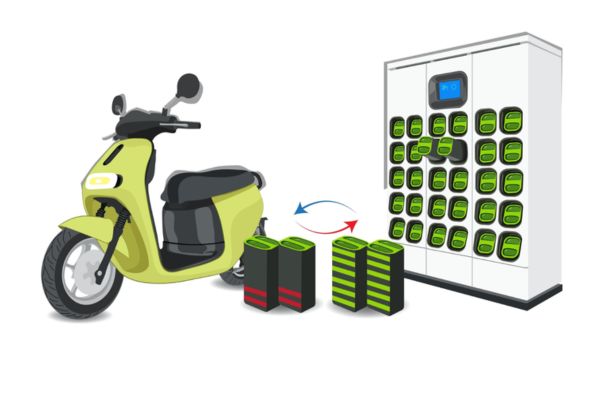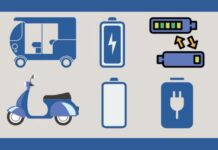India’s electric vehicle story usually focuses on launches of new EV cars, bold policy moves, and fast-growing start ups. Yet just below that glitter, its the commercial and working-class drivers and owners who are at the center of the critical transition to sustainable transportation for India. These commercial operators are the earlier adopters who, attracted by the TCO (total cost of ownership) and policy support (and pressure!), are confronting steep entry costs, scarce finance, and patchy service support as to lead the transition from fossil fuels to EVs. As they transition, the infrastructure will develop, the ecosystem will see scale and maturity and in the longer term, retail ownership of EVs will accelerate.
While this is all promising, the unfortunate reality is that the industry is largely focused on the future retail consumer rather than this everyday commercial user who is making the transition right now. They still struggle with the high upfront costs of EVs, the uncertainty of battery life and degradation, these high finance costs and their struggles with maintaining uptime. This is where, for many, battery swapping could be the answer.
This is India’s closest solution to commercial EV adoption’s key challenges: high capital expenditures, vehicle downtime, and poor battery resale value. Unfortunately, as many startups have realised – this is tough business to crack and today, on average, industry participants are moving away from swapping instead of towards it.
The Economics of Battery Swapping
Let’s recap how battery swapping works at the simplest level. A swapping company invests upfront in the infrastructure setting up battery swapping stations across the city which includes chargers, standardised batteries and manpower. The swapping company then goes to an OEM and partners with them to homologate their batteries with the OEM’s vehicles. The OEM can now sell a vehicle without a battery to commercial operators along with a per-km or per-KWh battery subscription. This customer never needs to worry about the battery condition, charging or disposal since thats what the swapping company solves for. The customer simply picks up a charged battery from the swap station, and exchanges it for a freshly charged one when they need one.
This solves so many problems for the Commercial EV users. Their needs are simple – they care about uptime, ROI, and daily working capital. This solves all of this – their upfront cost reduces since they pay for the vehicles sans the battery leading to a 33-50% reduction in cost, and their upfront battery cost converts into a variable cost paid based on their usage. Simply put – instead of paying for 5 years of fuel upfront, they are now paying for it per km as they have always done with petrol and CNG!
Simultaneously, they don’t need to worry about the life and replacement cost of the batteries which is one of the biggest concerns, and they don’t need to worry about the charging downtime since they can theoretically swap batteries in minutes.
The swapping company in turn, as a scaled entity has the ability to invest in the right technology to ensure maximum life for the battery through better charging and maintenance, ensure the highest end-of-life value through second life redeployment, and access lower cost of financing and electricity. Monetisation of carbon credits is another massive unlock in this construct and with API-based carbon credit certification, even gig workers with no credit history could become climate earners. Their swapping logs, when tied to verified emissions savings, generate tradable carbon assets usable for credit, loan guarantees, or incentive payouts.
Lastly for financing companies, this model works incredibly well. Individual commercial riders, drivers and owners struggle with financing for EVs due to most lenders being uncomfortable with the asset as well as the borrower’s credit profile. In a swapping model, the asset being financed, since it excludes the battery, is now lower cost and easier to refurb and redeploy in the case of recovery. If you then expand the set of customers to include India’s rural and informal mobility sectors battery swapping serves as both an energy solution and a financial inclusion tool.
So why is this so hard?
The key question however is a tough one – if battery swapping is such a brilliant solution and reinforced in so many forums, articles and panel discussions – then why isn’t it taking off? The challenges are unfortunately several.
Let’s first talk about regulation and its very direct impact on pricing. With GST for batteries being 18% vs. 5% for an EV with a battery, the swapping construct actually increases effective costs of the batteries by 13% since the swapping companies are buying batteries only. The second degree impact of this is even more far reaching – every time an operator pays for a swap, again the GST is 18% mirroring that of the asset itself which further increases costs for the operator who is unable to use the GST credit and hence in a market where fleet operators and commercial drivers have razor thin margins, this a cumulative cost increase they can ill afford.
Secondly, most swapping companies have struggled with a basic challenge – once the asset is not ‘owned’ by a customer, it tends to get treated more roughly and losses due to accelerated wear and tear and downright theft have been far more significant than anticipated by many players. While the move from NMC to LFP batteries enabled the swapping companies to theoretically run the batteries for 2-3x longer and hence divide their upfront cost over a longer period, the accelerated depreciation curves have prevented them from being able to realise, and pass on these benefits.
The last, and most critical challenge is the significant capital requirement of this business. Battery swapping is ultimately an infrastructure play no different from charging networks and telecom. Companies need to invest in the infrastructure upfront setting up the right number of charging stations across a local network so that customers can access one within 5 kms, they need to ensure the right number of batteries are deployed with a float of at least 10% on top of the anticipated demand – and then they have to wait for customers to come onboard and drive utilisation to get to profitability. Till they achieve 80% utilisation of a battery in a month i.e. 24 swaps, they continue to bleed thanks to interest costs, direct expenses and asset depreciation. This is where the challenge lies. Most swapping participants till date have been startups who have scaled as fast as they could before realising that equity and debt capital is hard to come by.
The lack of battery standards has further accentuated this problem since every new swapping player in the market has been forced to start from scratch and has tried to build their own private, scaled market which is impossible. Unfortunately and not surprisingly, most have had to call it a day or move to other models like BaaS or remain focused on sub-markets where they have achieved the required demand density and scale.
Betting Big on Battery Swapping
Often people ask the question of who will win – battery swapping or fast charging. That, in my mind, is a deeply flawed question. There is no silver bullet for India’s transition to sustainable transportation and no one is saying that battery swapping is The One solution. This isn’t about replacing all charging infrastructure or choosing swapping over charging – but this is about recognising that battery swapping is a great solution for a specific customer problem in India.
What India needs desperately are larger players with deeper access to capital to focus not only on charging but also on battery swapping, and better designed regulation to enable this. Without this, it’s extremely hard to see us achieving our 2030 aspirations especially in the smaller form factors like 2W and 3W.

















